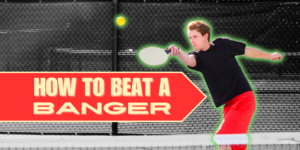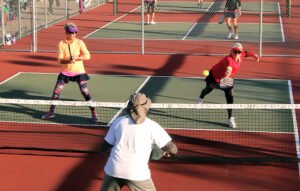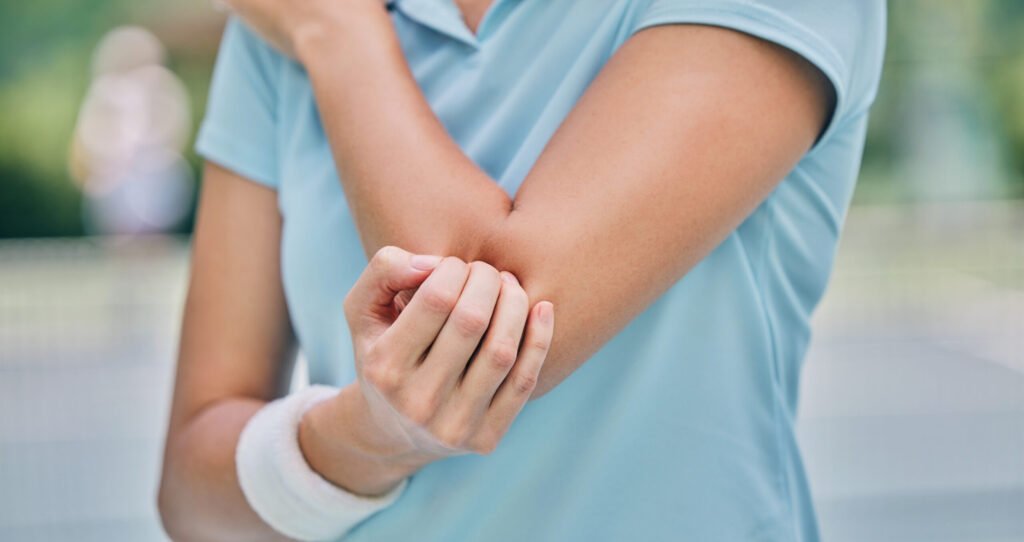
Pickleball’s exploding popularity has brought with it a surge in sports-related injuries. Did you know that a recent study found a 38% increase in pickleball-related emergency room visits over the past five years? Yikes! But don’t let that scare you off the court. As an avid player myself, I’m here to guide you through the most common pickleball injuries and share some game-changing pickleball injury prevention tips. Let’s keep you healthy and swinging that paddle with confidence!
Table of Contents
Understanding the Most Common Pickleball Injuries

Before we can prevent injuries, we need to know what we’re up against. So, let’s break down the most common pickleball injuries that might try to crash your game:
- Rotator Cuff Strains and Tears: Your shoulder’s MVP can take a beating in pickleball. All those overhead smashes and serves can lead to pain and weakness in your shoulder. It’s like your rotator cuff is saying, “Hey, I’m not a machine!”
- Tennis Elbow (Lateral Epicondylitis): Don’t let the name fool you – this isn’t just a tennis thing. Repetitive paddle swinging can irritate the tendons connecting your forearm muscles to the outer part of your elbow. Ouch!
- Achilles Tendonitis: Quick starts and stops can put a lot of stress on your Achilles tendon. If it starts feeling like someone’s constantly pinching the back of your ankle, you might be dealing with this pesky condition.
- Knee Injuries: From meniscus tears to ligament sprains, your knees take a lot of abuse on the pickleball court. All that pivoting, lunging, and quick direction changes can leave your knees feeling more abused than a public ping pong table.
- Wrist Sprains and Fractures: A fall on an outstretched hand or a powerful shot that you didn’t quite catch right can lead to wrist injuries. And let’s face it, trying to play pickleball one-handed is about as effective as trying to eat soup with a fork.
Understanding these common injuries is your first step in the grand strategy of pickleball injury prevention. It’s like knowing your opponent’s weaknesses – except in this case, the opponent is potential injury, and you’re going to come out on top!
Risk Factors for Pickleball Injuries
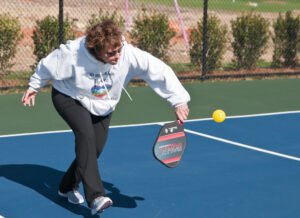
Just like how every player has their unique style on the court, we all have different risk factors when it comes to injuries. Let’s break down these sneaky culprits:
- Age-related factors: Let’s face it, folks – we’re not getting any younger! As we age, our bodies become less forgiving. Our muscles might not bounce back as quickly, and our joints might complain a bit more. But hey, age is just a number, right? (Just don’t tell that to your knees after a long tournament!)
- Improper technique: You know that saying, “Practice makes perfect”? Well, practicing the wrong technique makes for perfect injuries! Poor form can put unnecessary stress on your body. It’s like trying to open a pickle jar with your elbow – sure, you might get it done, but at what cost?
- Lack of warm-up and conditioning: Jumping straight into a game without warming up is like trying to run a marathon right after waking up from a nap. Your body needs time to get ready for action! And let’s not forget about overall conditioning – your pickleball skills might be top-notch, but if your fitness level is more “couch potato” than “court crusher,” you’re setting yourself up for trouble.
- Overuse and repetitive motions: Yes, practice makes perfect, but too much of a good thing can be, well, not so good. Repeating the same motions over and over without adequate rest can lead to overuse injuries. It’s like listening to your favorite song on repeat – eventually, you’re going to need a break!
- Court surface and footwear issues: The wrong shoes on the wrong surface? That’s a recipe for disaster. It’s like trying to ice skate on a basketball court – you might make it work for a while, but eventually, you’re going to slip up (literally!).
Understanding these risk factors is crucial in your quest for pickleball injury prevention. It’s like having a map of the minefield – you know where the dangers are, so you can navigate around them more easily.
Essential Warm-up Exercises for Injury Prevention
Alright, pickleball warriors, it’s time to get your blood pumping and your muscles ready for action! A proper warm-up isn’t just a suggestion – it’s your secret weapon in the battle against injuries. Let’s break down some key exercises that’ll have you prepped and primed for pickleball glory:
- Dynamic stretching routines: Forget those old-school static stretches – we’re going dynamic! Think arm circles, leg swings, and walking lunges. It’s like a dance party for your muscles, getting them loose and limber. Who said warming up can’t be fun?
- Shoulder and arm mobility exercises: Your shoulders and arms are the unsung heroes of pickleball. Show them some love with exercises like arm crossovers and shoulder rotations. Think of it as giving your upper body a pep talk before the big game!
- Lower body activation drills: Wake up those legs with some squats, calf raises, and hip rotations. Your lower body is the foundation of your pickleball prowess – we need it firing on all cylinders!
- Core strengthening exercises: A strong core is like the secret sauce of pickleball performance. Planks, Russian twists, and bicycle crunches will have your midsection ready to support all your amazing shots.
- Balance and coordination activities: Pickleball is all about quick movements and precise control. Try single-leg stands or walking heel-to-toe to fine-tune your balance. It’s like training to be a pickleball ninja!
Remember, a good warm-up routine doesn’t have to take forever. Even 10-15 minutes can make a world of difference. It’s a small investment of time that pays off big in injury prevention.
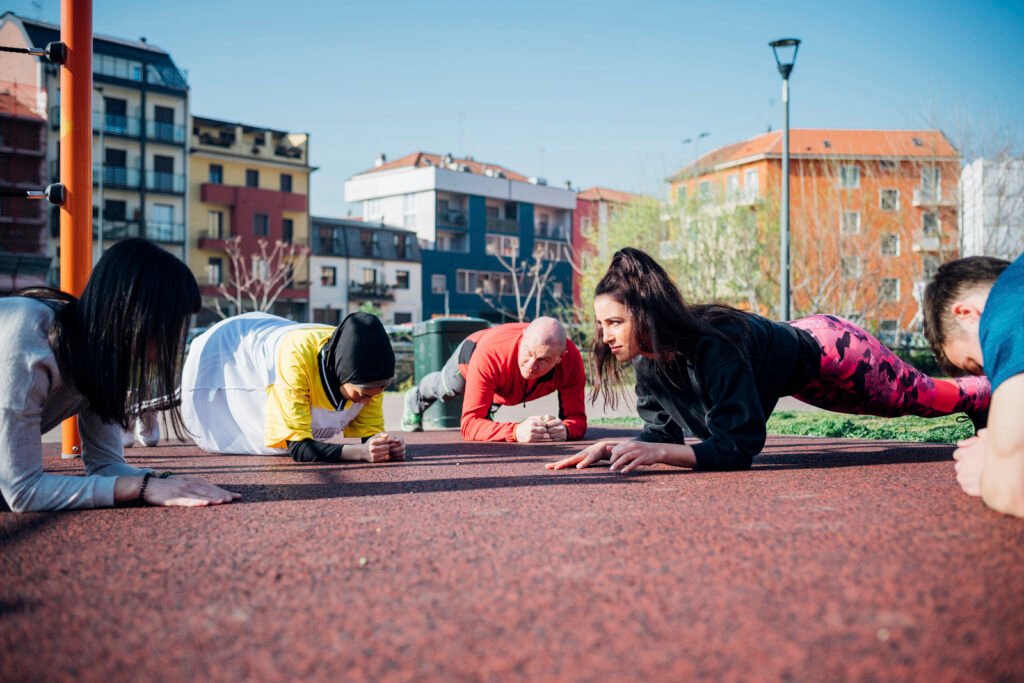
Pro tip: Make your warm-up social! Challenge your pickleball buddies to a pre-game warm-up contest. Who can hold a plank the longest? Who has the best walking lunge form? Turn it into a fun, competitive warm-up party!
Proper Technique to Avoid Overuse Injuries
Alright, pickleball pals, it’s time to fine-tune your form! Proper technique isn’t just about looking good on the court (though that’s a nice bonus). It’s your best defense against those pesky overuse injuries. Let’s break it down:
- Correct paddle grip and swing mechanics: First things first – let’s talk about your relationship with your paddle. Are you gripping it like you’re hanging off a cliff? Ease up, partner! A death grip can lead to tennis elbow faster than you can say “kitchen violation.” Aim for a relaxed grip and let your larger arm muscles do the work. Think of your swing as a smooth, controlled motion – not a wild flail. Your elbow will thank you!
- Footwork and positioning fundamentals: Newsflash: Pickleball isn’t a statue-impersonation contest! Good footwork is crucial. Stay light on your feet, ready to move in any direction. When you’re at the net, adopt a slight crouch – it’s not just for looking cool, it helps absorb impact and protects your knees. Remember, pickleball is a dance, and you’re the star!
- Avoiding excessive wrist movement: Your wrist isn’t a standalone superhero – it needs backup! Rely more on your shoulders and arms for power. Think of your arm as a single unit from shoulder to paddle. Your wrist should be the supporting actor, not the lead role. Save those wrist flicks for dramatically checking your watch when your opponent takes too long to serve!
- Proper serving technique: Ah, the serve – your moment to shine! But don’t let eagerness turn into injury. Keep your serving motion smooth and controlled. It’s not about power; it’s about placement. Imagine you’re gracefully offering the ball to the court, not trying to drill a hole through it!
- Safe dinking and volleying form: Dinking is an art form, folks. Keep your paddle up and ready, and use soft, controlled motions. For volleys, prepare early and let your body do the work. No need for heroic lunges or acrobatic twists – unless you’re auditioning for Cirque du Soleil’s new pickleball show!
Remember, good technique not only prevents injuries but also improves your game. It’s a win-win! And don’t be afraid to ask for feedback or even consider a few lessons. Even pros have coaches, right?
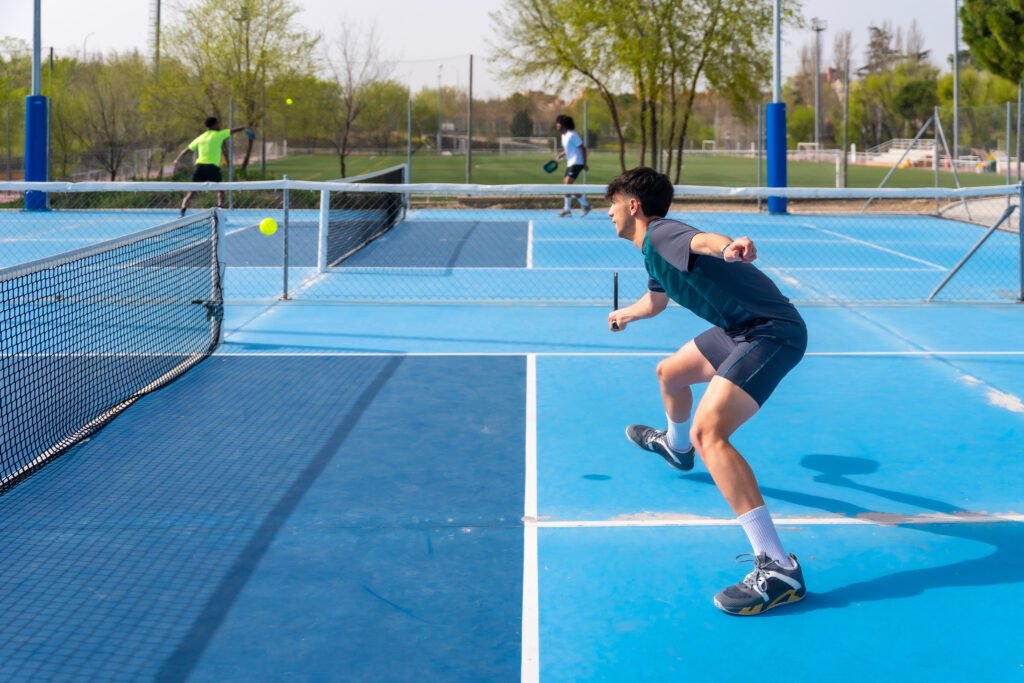
Pro tip: Film yourself playing and watch it back. Yes, I know – watching yourself on video can be cringe-worthy (trust me, I’ve been there). But it’s an excellent way to spot and correct technique issues before they become injury-causing habits.
Equipment Considerations for Injury Prevention
Alright, gear heads and gadget lovers, this one’s for you! Choosing the right equipment isn’t just about looking cool on the court (though that’s a nice bonus). It’s about keeping you safe, comfortable, and playing your best game. Let’s break down the essentials:
- Choosing the right paddle weight and grip size: Your paddle is like your pickleball soulmate – it needs to be just right! Too heavy, and you’ll be working overtime, risking shoulder and elbow injuries. Too light, and you might overcompensate with extra force. And grip size? It’s not a one-size-fits-all situation. A grip that’s too small or too large can lead to wrist and elbow issues faster than you can say “fault!” Try out different options and find your Goldilocks paddle – the one that’s just right.
- Selecting appropriate court shoes: Folks, your regular sneakers just won’t cut it here. Pickleball-specific or court shoes are designed with lateral support and cushioning in all the right places. They’re like superhero boots for your feet! Look for shoes with good traction – you want to stop on a dime, not slide like you’re on a Slip ‘N Slide.
- Using protective eyewear: I know, I know – you think you look cooler without goggles. But trust me, a ball to the eye is decidedly uncool (and painful!). Protective eyewear isn’t just for safety; it can actually improve your game by reducing glare. Think of them as your pickleball X-ray specs!
- Considering wrist and elbow supports: If you’re prone to wrist or elbow issues, supports can be a game-changer. They’re like a comforting hug for your joints. But remember, they’re not a substitute for proper technique – think of them as your backup dancers, not the lead singer.
- Importance of proper court maintenance: This one’s not exactly personal gear, but it’s crucial. A well-maintained court is safer for everyone. Cracks, debris, or slippery surfaces are like booby traps for unsuspecting pickleballers. If you spot issues, speak up! You’ll be the court maintenance superhero everyone needs.
Remember, the best gear is the gear that works for you. What works for your pickleball buddy might not be right for you. It’s all about finding your perfect match.
Now that we’ve got you geared up like a pickleball pro, are you ready to learn about the often-overlooked heroes of injury prevention – recovery and rest? Because that’s coming up next! We’ll explore how what you do off the court is just as important as what you do on it. Ready to become a 24/7 pickleball injury prevention machine?

Pro tip: Don’t be afraid to invest in quality gear. Yes, it might cost a bit more upfront, but it’s an investment in your health and enjoyment of the game. Plus, it’s way cheaper than medical bills!
Recovery and Rest: Key Components of Injury Prevention
Listen up, pickleball warriors! I know you’re eager to spend every waking moment on the court, but here’s a shocker: sometimes the best thing you can do for your game is… not play! That’s right, recovery and rest are the secret sauce in your injury prevention recipe. Let’s break it down:
- Implementing proper cool-down routines: You wouldn’t turn off your car right after a long drive, would you? Your body deserves the same courtesy! After a game, take 10-15 minutes to cool down. Light stretching, gentle walking, or even some yoga poses can help your body transition from “game mode” to “chill mode.” It’s like giving your muscles a spa day after their hard work!
- Importance of adequate rest between play sessions: I get it – pickleball is addictive. But playing every day is like binge-watching your favorite show without sleep breaks. Your body needs time to recover and repair. Aim for at least one or two rest days a week. Use this time to reminisce about your awesome shots or plan your next victory dance.
- Recognizing early signs of injury: Your body is smart – it’ll tell you when something’s wrong. Listen to it! Persistent pain, swelling, or decreased range of motion are your body’s way of waving a red flag. Don’t ignore these signs hoping they’ll magically disappear. It’s not like ignoring your neighbor’s ugly lawn ornaments – these problems won’t go away on their own!
- Cross-training and active recovery options: Variety is the spice of life, and it’s also great for injury prevention! On your off days, try activities that complement pickleball. Swimming, cycling, or even a dance class can help maintain your fitness while giving your pickleball muscles a break. Think of it as cross-pollination for your athleticism!
- Proper hydration and nutrition for recovery: You wouldn’t run your car on empty, so don’t do it to your body! Staying hydrated and eating a balanced diet rich in proteins, complex carbs, and anti-inflammatory foods can speed up recovery and keep you in top form. Consider your body a high-performance machine – give it premium fuel!
Remember, rest isn’t laziness – it’s an essential part of your training regimen. It’s during these periods of rest that your body adapts and gets stronger. So next time you’re feeling guilty about taking a day off, remind yourself that you’re not being a couch potato – you’re being a smart, injury-preventing pickleball champion!
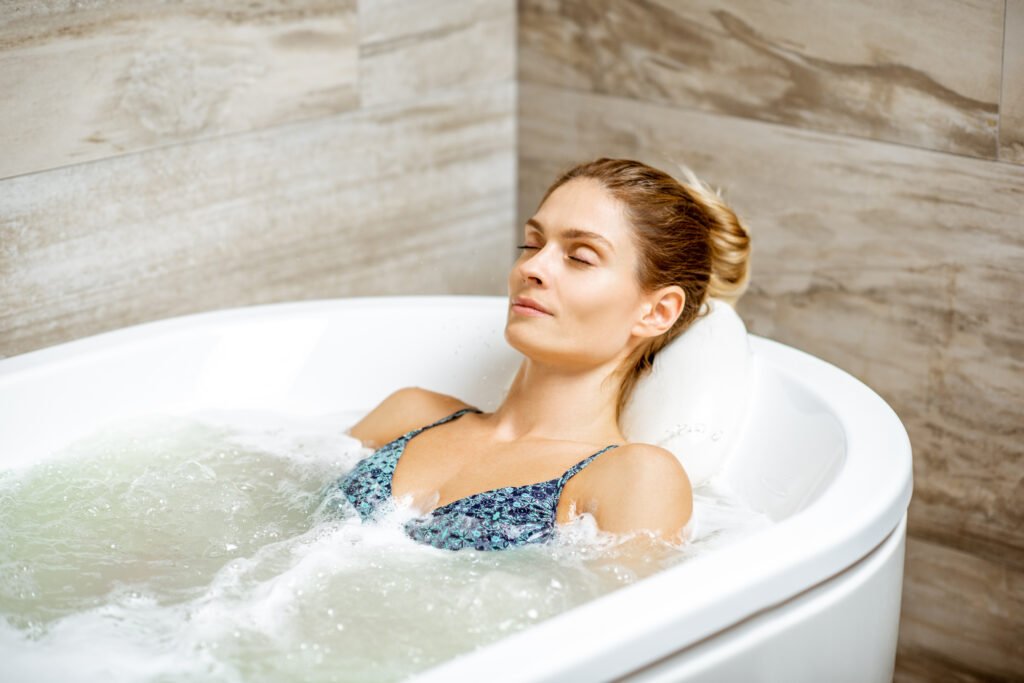
Pro tip: Create a recovery ritual. Maybe it’s a post-game smoothie, a relaxing bath, or some gentle stretching while watching your favorite show. Making recovery enjoyable means you’re more likely to stick with it!
There you have it, fellow pickleballers! By understanding common injuries and implementing these prevention strategies, you’re setting yourself up for a safer and more enjoyable pickleball experience. Remember, listening to your body is crucial – don’t push through pain! With the right approach, you’ll be dinking, serving, and volleying your way to victory while keeping injuries at bay. Now, who’s ready to hit the courts? Let’s play smart and stay healthy together!

